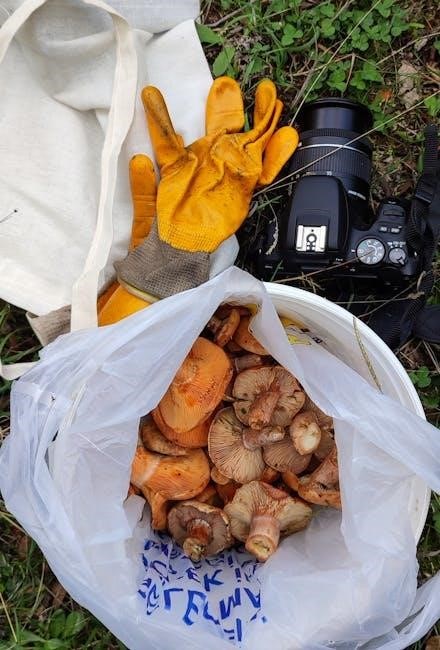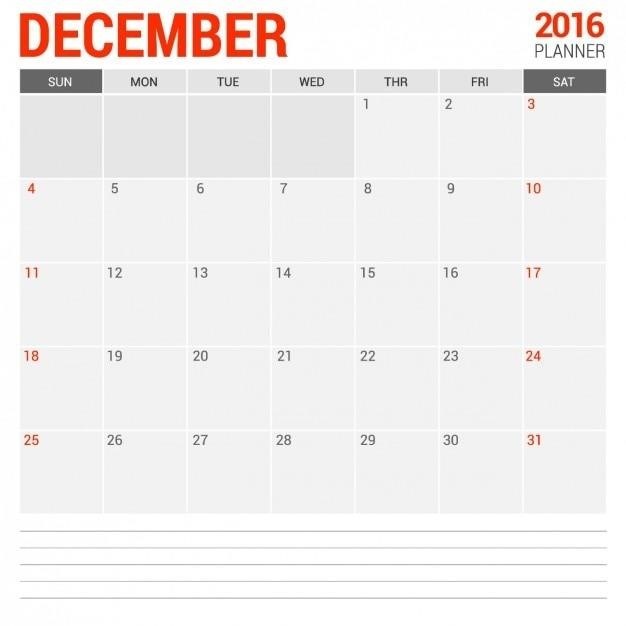Proper glove sizing is crucial for comfort and performance. Use a ruler, string, or tape measure to determine your size. This guide helps you find the perfect fit for work, sports, or winter activities.
1.1 Importance of Proper Glove Fit
A proper glove fit is essential for comfort, dexterity, and performance; Ill-fitting gloves can cause discomfort, restrict movement, or even reduce tactile sensitivity, which is critical for tasks requiring precision. Whether for work, sports, or winter activities, the right fit ensures optimal functionality and safety. A glove that is too tight may limit circulation, while one that is too loose can hinder grip and control. Proper sizing also extends the lifespan of gloves by preventing stretching or tearing from improper use. For specific applications, such as medical or industrial settings, accurate fit is vital for protection and hygiene. Measuring hand circumference and finger length ensures a tailored fit, enhancing overall user experience. Prioritizing proper glove fit guarantees better performance, comfort, and durability, making it a crucial step in selecting the right pair for any purpose.
1.2 Overview of Glove Size Guides
Glove size guides are essential tools for determining the perfect fit. They typically include measurements for hand circumference and finger length, ensuring comfort and functionality. These guides vary by type, such as winter, work, or medical gloves, each with specific sizing standards. To measure accurately, a ruler, string, or flexible tape can be used. Simply wrap the tool around the widest part of your hand, excluding the thumb, and compare the measurement to the size chart. Proper sizing ensures optimal performance, whether for protection, grip, or dexterity. By following a glove size guide, you can avoid common issues like restrictive fit or excessive looseness. This ensures your gloves provide the necessary support and comfort for their intended use, making them a reliable choice for any activity.

How to Measure Your Hand Size
Use a ruler, string, or flexible tape to measure your hand. Wrap it around the widest part of your hand, excluding the thumb, to determine your hand circumference and finger length for a proper fit.
2.1 Tools Needed for Measurement
To measure your hand size accurately, you’ll need a few simple tools. A flexible tape measure is ideal, but if unavailable, use a ruler, string, or a strip of paper. Wrap the string or paper around your hand at the widest point, then measure its length with a ruler. For precision, ensure your hand is flat and fingers are together, excluding the thumb. Alternatively, a strip of dental floss can be wrapped around your hand and measured against a ruler. These tools help determine your hand circumference and finger length, essential for selecting the correct glove size. Always measure both hands, as they may differ slightly. Using the right tools ensures accuracy and helps you find gloves that offer comfort and optimal performance for your specific needs.
2.2 Step-by-Step Measurement Process
Measuring your hand for gloves involves a few straightforward steps. First, flatten your hand with fingers together and thumb aside. Wrap a flexible tape measure or a string around the widest part of your palm, just below the knuckles. Ensure the tape is snug but not tight. If using a string, mark the point where it overlaps, then measure the length with a ruler. Next, measure your finger length by placing the tape vertically from the base of your middle finger to the tip. For accuracy, repeat the process for both hands, as they may differ. Record the measurements and compare them to a glove size chart to find your ideal fit. This method ensures you get gloves that are neither too tight nor too loose, providing comfort and dexterity for any activity.

2.4 Common Mistakes to Avoid
When measuring your hand for gloves, avoid common mistakes to ensure accuracy. One mistake is using a rigid ruler instead of a flexible tape measure or string, which can lead to incorrect sizing. Another error is measuring too loosely or too tightly, as this can result in gloves that are either too snug or too bulky. Additionally, some people forget to measure both hands, assuming they are the same size, but this can lead to poor fit. Not aligning the hand properly—such as failing to flatten it or keeping fingers apart—can also skew results. Lastly, neglecting to account for finger length or hand shape can affect dexterity and comfort. By avoiding these errors and following the step-by-step process, you can ensure a more accurate measurement and a better fit for your gloves.

Understanding Glove Size Charts
Glove size charts provide a standardized guide to help determine the best fit. They typically include measurements in inches or centimeters, ensuring accuracy for various hand sizes and glove types.

3.1 Standard Glove Size Charts
Standard glove size charts are essential for ensuring a proper fit. They typically measure hand circumference and finger length in inches or centimeters. These charts vary by brand but follow similar sizing patterns. To use them effectively, measure around the palm at the widest point, excluding the thumb. Finger length is measured from the base to the tip. Most charts include sizes from small to extra-large, catering to different hand sizes. Proper sizing ensures comfort, dexterity, and optimal performance. Always refer to the specific chart provided by the manufacturer, as sizing can vary slightly. For accuracy, measure both hands and choose the larger size. This approach guarantees the best fit, whether for work, sports, or winter gloves.
3.2 Men’s, Women’s, and Kids’ Size Differences
Glove sizing varies significantly between men, women, and children due to differences in hand size and shape. Men’s hands are generally larger and broader, while women’s hands tend to be smaller with narrower wrists. Kids’ gloves are designed for smaller, growing hands. Standard size charts often include separate categories for each group, ensuring a better fit. Men’s sizes typically range from small to extra-large, while women’s sizes may start at extra-small. Kids’ sizes are usually labeled by age or youth sizes. Material thickness and intended use also influence sizing differences. For example, women’s gloves might prioritize flexibility, while men’s gloves focus on durability. Always refer to gender-specific charts to ensure accuracy. Proper sizing enhances comfort and functionality, making it essential to choose the right category for your needs.
3.3 How to Read a Glove Size Chart
Reading a glove size chart is straightforward once you understand the measurements. Most charts list sizes in numerical or alphabetical formats (e.g., Small, Medium, Large). To use the chart, measure the circumference of your hand just below the knuckles using a ruler, string, or flexible tape. This measurement, typically in inches, corresponds to the sizes listed. For example, a 7-inch circumference might align with a Medium size. Some charts also include finger length measurements, ensuring proper fit for dexterity. Pay attention to whether the chart is for men, women, or kids, as sizes differ. Match your hand measurement to the closest size on the chart. If your measurement falls between sizes, consider the intended use—thicker materials may require a slightly larger size for comfort. Always double-check the chart’s instructions for accuracy.

Factors Affecting Glove Fit
Material thickness, hand shape, and intended use influence glove fit. Thicker materials may require a larger size, while unique hand shapes or specific activities demand tailored sizing for optimal comfort and functionality.
4.1 Material Thickness and Stretch
Material thickness and stretch significantly impact glove fit. Thicker materials, like leather or heavy-duty synthetics, may require a larger size for comfort, while thinner materials, such as nitrile or latex, fit tighter. Stretchy fabrics, like spandex, offer flexibility, accommodating various hand sizes. Gloves with padding or insulation may need a slightly larger size to ensure dexterity. Understanding the material’s properties helps in selecting the right size for optimal performance and comfort. Always consider the balance between protection and mobility when choosing gloves.
4.2 Hand Shape and Finger Length
Hand shape and finger length play a crucial role in determining the perfect glove fit. People with wider palms or longer fingers may require larger sizes to ensure comfort and dexterity. Conversely, those with narrower hands or shorter fingers may find smaller sizes more suitable. Standard glove size charts often assume average hand proportions, but variations in hand shape can affect fit. For instance, gloves designed for specific activities may prioritize finger length over palm width. Measuring both palm circumference and finger length ensures a more accurate fit. Additionally, some gloves offer adjustable features to accommodate different hand shapes. Considering these factors helps in selecting gloves that provide optimal comfort and functionality, whether for work, sports, or everyday use.
4.3 Intended Use of Gloves
The intended use of gloves significantly influences sizing requirements. For example, winter gloves may need to be slightly larger to accommodate thickness, while work gloves should fit snugly for dexterity. Sports gloves often require a precise fit to ensure performance. Material thickness and purpose dictate sizing needs. Gloves for heavy-duty tasks may prioritize durability over tight fit, whereas medical gloves demand a snug fit for tactile sensitivity. Understanding the glove’s purpose helps in selecting the right size for optimal functionality and comfort. Always consider the activity and material when choosing your size to ensure the best fit for your needs.

Types of Gloves and Their Sizing
From winter gloves to work gloves, sizing varies by use and material. Sports gloves prioritize fit for performance, while medical gloves require snugness for tactile sensitivity. Each type has unique sizing needs.
5.1 Winter Gloves Sizing
Winter gloves sizing focuses on comfort and warmth while ensuring dexterity. Measure your hand circumference using a ruler or string, then compare it to a size chart. Thicker materials like wool or synthetic insulation require a snug fit to maintain warmth. Consider activities like skiing or snowboarding, which may need a slightly looser fit for layering. Proper sizing ensures fingers can move freely without restricting blood flow. Avoid sizes too tight, as they can cause discomfort or reduce circulation. For optimal fit, measure both hands, as they may differ slightly. Use the larger measurement to ensure comfort and mobility. Winter gloves often have sizing charts specific to their thickness and intended use, so refer to the manufacturer’s guide for accuracy.

5.2 Work Gloves Sizing
Proper sizing for work gloves is essential for both protection and dexterity. Measure your hand circumference using a ruler or string, then compare it to a size chart. Work gloves often have thicker materials, so ensure a snug fit without restricting movement. Consider the intended use, as heavy-duty tasks may require a slightly looser fit for better grip. Avoid sizes too tight, as they can cause discomfort or reduce dexterity. Measure both hands, as they may differ, and use the larger measurement for comfort. Work gloves may also vary in sizing based on material thickness and stretch. Refer to the manufacturer’s size guide for accuracy, as sizing can differ between brands. Proper fit ensures optimal performance and safety in workplace environments.
5.3 Sports Gloves Sizing
Sports gloves require precise sizing for optimal performance and comfort. Measure your hand circumference using a ruler, string, or flexible tape, then refer to the manufacturer’s size chart. Sports gloves often prioritize dexterity, so a snug fit is crucial. Ensure your fingers can move freely without the gloves feeling too tight or restrictive. Consider the intended use, as different sports may require varying levels of grip, padding, or flexibility. For example, cycling gloves may have padding on the palms, which can affect sizing. Measure both hands, as they may differ, and use the larger measurement for comfort. Sports gloves may also vary in sizing based on material thickness and stretch. Proper fit ensures enhanced performance, grip, and protection during activities. Always check the size guide specific to the sport and brand for the best results.
5.4 Medical Gloves Sizing
Proper sizing for medical gloves is essential for comfort, dexterity, and protection. Measure your hand circumference using a tape measure or a string wrapped around your palm at the widest point. Sizes are typically measured in inches, and most manufacturers provide detailed size charts. Ensure a snug fit to maintain tactile sensitivity, as loose gloves can hinder precision. However, avoid overly tight gloves, as they may restrict movement or cause discomfort during extended use. Different brands may have slight variations, so always consult the specific size guide provided. Proper fit is critical for maintaining the integrity of the glove and ensuring reliable barrier protection. Measure both hands, as they may differ, and choose the size that fits the larger hand for optimal comfort and functionality. This ensures the gloves meet the necessary safety and performance standards for medical use.

How to Choose the Right Glove Size
Use a tape measure or string to measure your hand circumference. Compare it to a size chart for the best fit. Ensure gloves are snug but not restrictive for optimal comfort and performance.
6.1 Using a Glove Size Chart
A glove size chart is essential for ensuring the best fit. Start by measuring your hand circumference using a tape measure or a flexible object like a string or strip of paper. Wrap it around the widest part of your hand, just below the knuckles, and mark where the ends meet. Use this measurement to find your size on the chart. Most charts list sizes in inches or centimeters, making it easy to match your hand size to the corresponding glove size. For accuracy, ensure the glove material and intended use align with your needs, as some materials may stretch more than others. Always refer to the specific chart provided by the manufacturer, as sizing can vary slightly between brands. By following this method, you can confidently select gloves that offer both comfort and functionality. Proper sizing ensures optimal performance and durability, whether for work, sports, or everyday use.
6.2 Trying Gloves On
Trying gloves on is the best way to ensure a perfect fit. When you put them on, make a fist to check if the gloves feel snug but not tight. The material should conform to your hand without restricting movement. Pay attention to finger length—tips should reach the end of your fingers without excess fabric. If the gloves are too loose, dexterity and grip may be compromised. For optimal comfort, ensure the cuff fits securely around your wrist without digging into your skin. If possible, try gloves on in the afternoon, as hands tend to swell slightly during the day. This ensures the fit remains comfortable throughout. Remember, different materials stretch differently, so consider the glove’s flexibility and how it may mold to your hand over time. Always prioritize both comfort and functionality when making your final choice.
6.3 Considering Stretch and Flexibility
When choosing gloves, consider the material’s stretch and flexibility. Synthetic materials like nitrile or neoprene offer excellent elasticity, while natural materials like leather may stretch over time. Assess how the gloves mold to your hand and allow for natural movement. A glove that is too stiff may limit dexterity, while one that is too stretchy may lose shape. For activities requiring precision, opt for gloves with a snug fit that maintains flexibility. If the gloves are for heavy use, ensure they have enough give to accommodate hand movement without tearing. Some materials, like spandex, are designed to provide maximum stretch, making them ideal for active use. Always check the glove’s flexibility by flexing your hand or simulating the activity for which they are intended. Proper stretch ensures comfort and durability, making it a key factor in your sizing decision. Balancing fit and flexibility is essential for optimal performance and comfort.

Tips for a Perfect Fit
Ensure a perfect fit by measuring both hands, checking finger length, and trying gloves on. Prioritize comfort, mobility, and proper stretch for optimal performance and durability in any activity.
7.1 Measuring Both Hands
Measuring both hands is essential for accuracy, as one hand may be slightly larger than the other. Use a flexible tape measure or a string wrapped around your palm at the widest point, just below the knuckles. Ensure your hand is flat, with fingers together, and the measurement is taken without tension. Record the circumference in inches or centimeters and compare it to a glove size chart. For the best fit, consider the thickness of the material and the intended use of the gloves. If unsure, opt for the larger size to ensure comfort and mobility. This step ensures your gloves fit perfectly, providing optimal comfort and functionality for any activity.
7.2 Checking Finger Length and Dexterity
Ensuring proper finger length and dexterity is vital for optimal glove fit. After measuring your hand circumference, check if your fingers fit comfortably within the glove’s fingertips. The gloves should allow for a small gap, about 1/4 inch, to maintain dexterity. If the fingers are too long or too short, it can restrict movement or cause discomfort. For precise measurement, align your fingers with the glove’s seams and ensure they match your fingertip length. Consider the material’s stretch and thickness, as these factors impact flexibility. Proper fit ensures your hands remain agile, whether for work, sports, or everyday use. Always prioritize both comfort and functionality when selecting gloves.
7.3 Ensuring Comfort and Mobility
Comfort and mobility are essential for a satisfying glove-wearing experience. Ensure the gloves fit snugly but not too tightly, allowing free finger movement. The material’s thickness and stretch play a significant role in comfort. Thicker materials, like winter gloves, may reduce dexterity but offer warmth, while thinner options, such as medical gloves, prioritize tactile sensitivity. When trying on gloves, bend your fingers and wrists to confirm ease of movement. Avoid gloves that restrict circulation or cause pressure points. Proper sizing ensures breathability and prevents moisture buildup, enhancing comfort during extended use. For sports or work gloves, prioritize flexibility to maintain performance. Ultimately, the right balance between fit and flexibility ensures optimal comfort and mobility for any activity. Always consider the intended use when selecting gloves to meet your specific needs.
Proper glove sizing ensures comfort, dexterity, and optimal performance. Use tools like a ruler or string to measure accurately. Consider material, fit, and intended use for the best experience.
8.1 Summary of Key Points
Proper glove sizing is essential for comfort, dexterity, and performance. Measure your hand using a tape measure, ruler, or flexible tools like string or paper strips. Understand size charts and consider factors like material thickness, hand shape, and intended use. Always try gloves on if possible, ensuring they allow for full mobility and comfort. For accuracy, measure both hands, as they may differ slightly. Check finger length and dexterity to avoid restrictive fits. Optimal fit balances snugness and freedom of movement, ensuring safety and functionality. Refer to specific guides for winter, work, sports, or medical gloves to meet your needs. By following these steps, you can confidently select the right size for any purpose, enhancing your overall experience.
8.2 Final Tips for Optimal Fit
For the best glove fit, always measure both hands, as they may differ in size. Try gloves on if possible, especially for specific uses like winter or sports. Ensure the material offers the right balance of stretch and support. Check that fingers are neither too long nor too short for the glove. Make a fist to confirm ease of movement and avoid restrictive fits. Consider the intended use and choose materials that suit your activity. Refer to a size chart for accuracy, but also trust your comfort level. If unsure, opt for a slightly larger size for winter gloves or a snug fit for work gloves. Prioritize both comfort and functionality to ensure the best experience.


